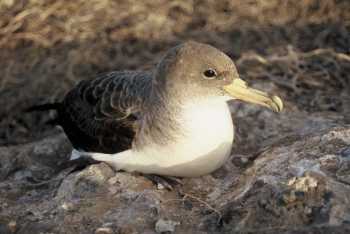Timothee Zidat (Université de Montpellier, France) and colleagues write in the Zoological Journal of the Linnean Society on assortative mating in sympatrically breeding Cory’s Calonectris borealis and Scopoli's C. diomedea Shearwaters.
“Reproductive isolation of avian species often extensively relies on mate choice. Several bird species have recently been shown to use chemical cues in mate choice, in addition to the well-studied visual and acoustic signals. The two former European subspecies of Cory’s shearwater have been recently afforded species status as Calonectris borealis and C. diomedea, but their level of reproductive isolation has not fully been evaluated and one previous study suggested that their nuclear genome is undifferentiated. The species differ in chemical labels (volatile compounds in uropygial gland secretions) in allopatry, but whether these differences are maintained in sympatry or not remains unclear. We sampled both species in a mixed colony in the Chafarinas Islands in order to test whether their nuclear genomes are truly undifferentiated and to study their level of reproductive isolation in sympatry. We also tested whether the chemical differences in uropygial secretions observed in allopatric populations are maintained in sympatry or not. We established a clear divergence in nuclear genome between these species, suggesting efficient reproductive isolation mechanisms, and found evidence for assortative mating. We also found that chemical labels remain distinct in sympatry, suggesting their divergence is not purely due to environmental effects.”

Cory's Shearwater, photograph by Paulo Catry
Reference:
Zidat, T., Dell’Ariccia, G., Gabirot, M., Sourrouille, P., Buatois, B. Celerier, A. Bonadonna, F. & Crochet, P.-A. 2017. Reproductive isolation maintains distinct genotypes, phenotypes and chemical signatures in mixed colonies of the two European Calonectris shearwaters (Procellariiformes: Procellariidae). Zoological Journal of the Linnean Society. doi.org/10.1093/zoolinnean/zlx002.
John Cooper, ACAP Information Officer, 12 June 2017

 English
English  Français
Français  Español
Español